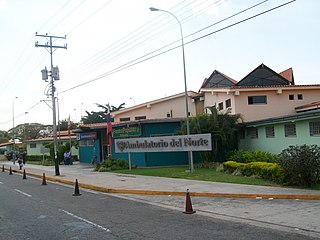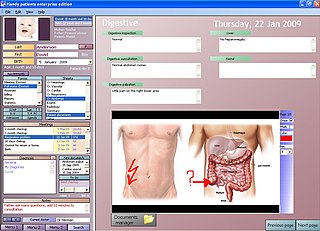Evidence-based medicine (EBM) is an approach to medical practice intended to optimize decision-making by emphasizing the use of evidence from well-designed and well-conducted research. Although all medicine based on science has some degree of empirical support, EBM goes further, classifying evidence by its epistemologic strength and requiring that only the strongest types can yield strong recommendations; weaker types can yield only weak recommendations. The term was originally used to describe an approach to teaching the practice of medicine and improving decisions by individual physicians about individual patients. Use of the term rapidly expanded to include a previously described approach that emphasized the use of evidence in the design of guidelines and policies that apply to groups of patients and populations. It has subsequently spread to describe an approach to decision-making that is used at virtually every level of health care as well as other fields.

In the medical profession, a general practitioner (GP) is a medical doctor who treats acute and chronic illnesses and provides preventive care and health education to patients.

Ambulatory care or outpatient care is medical care provided on an outpatient basis, including diagnosis, observation, consultation, treatment, intervention, and rehabilitation services. This care can include advanced medical technology and procedures even when provided outside of hospitals.

Health informatics is information engineering applied to the field of health care, essentially the management and use of patient healthcare information. It is a multidisciplinary field that uses health information technology (HIT) to improve health care via any combination of higher quality, higher efficiency, and new opportunities. The disciplines involved include information science, computer science, social science, behavioral science, management science, and others. The NLM defines health informatics as "the interdisciplinary study of the design, development, adoption and application of IT-based innovations in healthcare services delivery, management and planning". It deals with the resources, devices, and methods required to optimize the acquisition, storage, retrieval, and use of information in health and bio-medicine. Health informatics tools include computers, clinical guidelines, formal medical terminologies, and information and communication systems, among others. It is applied to the areas of nursing, clinical medicine, dentistry, pharmacy, public health, occupational therapy, physical therapy, biomedical research, and alternative medicine, all of which are designed to improve the overall of effectiveness of patient care delivery by ensuring that the data generated is of a high quality.

A physician assistant or physician associate (PA) is a health care practitioner who practices medicine in collaboration with or under the (indirect) supervision of a physician, depending on state laws. Physicians do not need to be on-site with PAs and collaboration or supervision often occurs via electronic means when consults are necessary. Their scope of practice varies by jurisdiction and healthcare setting.
General practice is the name given in various nations, such as the United Kingdom, Australia and New Zealand, to the services provided by General practitioners. In some nations, such as the US, similar services may be described as family medicine or primary care. The term Primary Care in the UK may also include services provided by community pharmacy, optometrist, dental surgery and community hearing care providers. The balance of care between primary care and secondary care - which usually refers to hospital based services - varies from place to place, and with time. In many countries there are initiatives to move services out of hospitals into the community, in the expectation that this will save money and be more convenient.

An electronic health record (EHR) is the systematized collection of patient and population electronically-stored health information in a digital format. These records can be shared across different health care settings. Records are shared through network-connected, enterprise-wide information systems or other information networks and exchanges. EHRs may include a range of data, including demographics, medical history, medication and allergies, immunization status, laboratory test results, radiology images, vital signs, personal statistics like age and weight, and billing information.
Telehealth involves the distribution of health-related services and information via electronic information and telecommunication technologies. It allows long distance patient/clinician contact and care, advice, reminders, education, intervention, monitoring and remote admissions. Telemedicine is sometimes used synonymously, or is used in a more limited sense to describe remote clinical services such as diagnosis and monitoring. When rural settings, lack of transport, lack of mobility, decreased funding or lack of staffing restrict access to care, telehealth can bridge the gap.

Westmead Hospital is a major tertiary hospital in Sydney, Australia. Opened on 10 November 1978, the 975-bed hospital forms part of the Western Sydney Local Health District, and is a teaching hospital of Sydney Medical School at the University of Sydney.
eHealth is a relatively recent healthcare practice supported by electronic processes and communication, dating back to at least 1999. Usage of the term varies. A study in 2005 found 51 unique definitions. Some argue that it is interchangeable with health informatics with a broad definition covering electronic/digital processes in health while others use it in the narrower sense of healthcare practice using the Internet. It can also include health applications and links on mobile phones, referred to as mHealth or m-Health.
The Agency for Healthcare Research and Quality is 1 of 12 agencies within the United States Department of Health and Human Services (HHS). The agency is headquartered in North Bethesda, Maryland, a suburb of Washington, D.C.. It was established as the Agency for Health Care Policy and Research (AHCPR) as a constituent unit of the Public Health Service (PHS) under the Omnibus Budget Reconciliation Act of 1989, December 19, 1989, to enhance the quality, appropriateness, and effectiveness of health care services and access to care by conducting and supporting research, demonstration projects, and evaluations; developing guidelines; and disseminating information on health care services and delivery systems.
Health impact assessment (HIA) is defined as "a combination of procedures, methods, and tools by which a policy, program, or project may be judged as to its potential effects on the health of a population, and the distribution of those effects within the population."
Patient advocacy is an area of specialization in health care concerned with advocacy for patients, survivors, and caregivers. The patient advocate may be an individual or an organization, often, though not always, concerned with one specific group of disorders. The terms patient advocate and patient advocacy can refer both to individual advocates providing services that organizations also provide, and to organizations whose functions extend to individual patients. Some patient advocates work for the institutions that are directly responsible for the patient's care.
The Clinical Practice Research Datalink (CPRD) is an observational and interventional research service that operates as part of the UK Department of Health. It is jointly funded by the National Institute for Health Research (NIHR) and the Medicines and Healthcare products Regulatory Agency (MHRA). CPRD is working closely with the extensive primary care, topic specific and comprehensive NIHR research networks and with NHS Digital.
Evidence-based nursing (EBN) is an approach to making quality decisions and providing nursing care based upon personal clinical expertise in combination with the most current, relevant research available on the topic. This approach is using evidence-based practice (EBP) as a foundation. EBN implements the most up to date methods of providing care, which have been proven through appraisal of high quality studies and statistically significant research findings. The goal of EBN is to improve the health and safety of patients while also providing care in a cost-effective manner to improve the outcomes for both the patient and the healthcare system. EBN is a process founded on the collection, interpretation, appraisal, and integration of valid, clinically significant, and applicable research. The evidence used to change practice or make a clinical decision can be separated into seven levels of evidence that differ in type of study and level of quality. To properly implement EBN, the knowledge of the nurse, the patient's preferences, and multiple studies of evidence must all be collaborated and utilized in order to produce an appropriate solution to the task at hand. These skills are taught in modern nursing education and also as a part of professional training.
Outcomes research is a branch of public health research, which studies the end results (outcomes) of the structure and processes of the health care system on the health and well-being of patients and populations. According to one medical outcomes and guidelines source book - 1996, Outcomes research includes health services research that focuses on identifying variations in medical procedures and associated health outcomes. Though listed as a synonym for the National Library of Medicine MeSH term "Outcome Assessment ", outcomes research may refer to both health services research and healthcare outcomes assessment, which aims at Health technology assessment, decision making, and policy analysis through systematic evaluation of quality of care, access, and effectiveness.
The Office of Cancer Complementary and Alternative Medicine (OCCAM) is an office of the National Cancer Institute (NCI) in the Division of Cancer Treatment and Diagnosis. OCCAM was founded in 1998 and is responsible for NCI’s research agenda in pseudoscientific complementary and alternative medicine (CAM), as it relates to cancer prevention, diagnosis, treatment, and symptom management. The OCCAM differs from the National Center for Complementary and Alternative Medicine (NCCAM) in that it is exclusively focused on cancer, while the NCCAM funds a much broader program of NIH research into CAM for all diseases and disorders. It last produced an annual report in 2011 and spent $105 million on CAM research in 2011.
Behavioral health outcome management (BHOM) involves the use of behavioral health outcome measurement data to help guide and inform the treatment of each individual patient. Like blood pressure, cholesterol and other routine lab work that helps to guide and inform general medical practice, the use of routine measurement in behavioral health is proving to be invaluable in assisting therapists to deliver better quality care.
An anesthesiologist assistant is an advanced non-physician provider who provides anesthesia under the medical direction of a physician anesthesiologist. In the United States, such providers are termed certified anesthesiologist assistants or CAAs and are known professionally as anesthetists.
care.data was a programme announced by the then Health and Social Care Information Centre in Spring 2013. It aimed to extract data from GP surgeries into a central database through the General Practice Extraction Service (GPES). Members of the English population who were registered with GP practices were informed that data on their health would be uploaded to HSCIC unless they exercised their rights to object by informing their GP.








